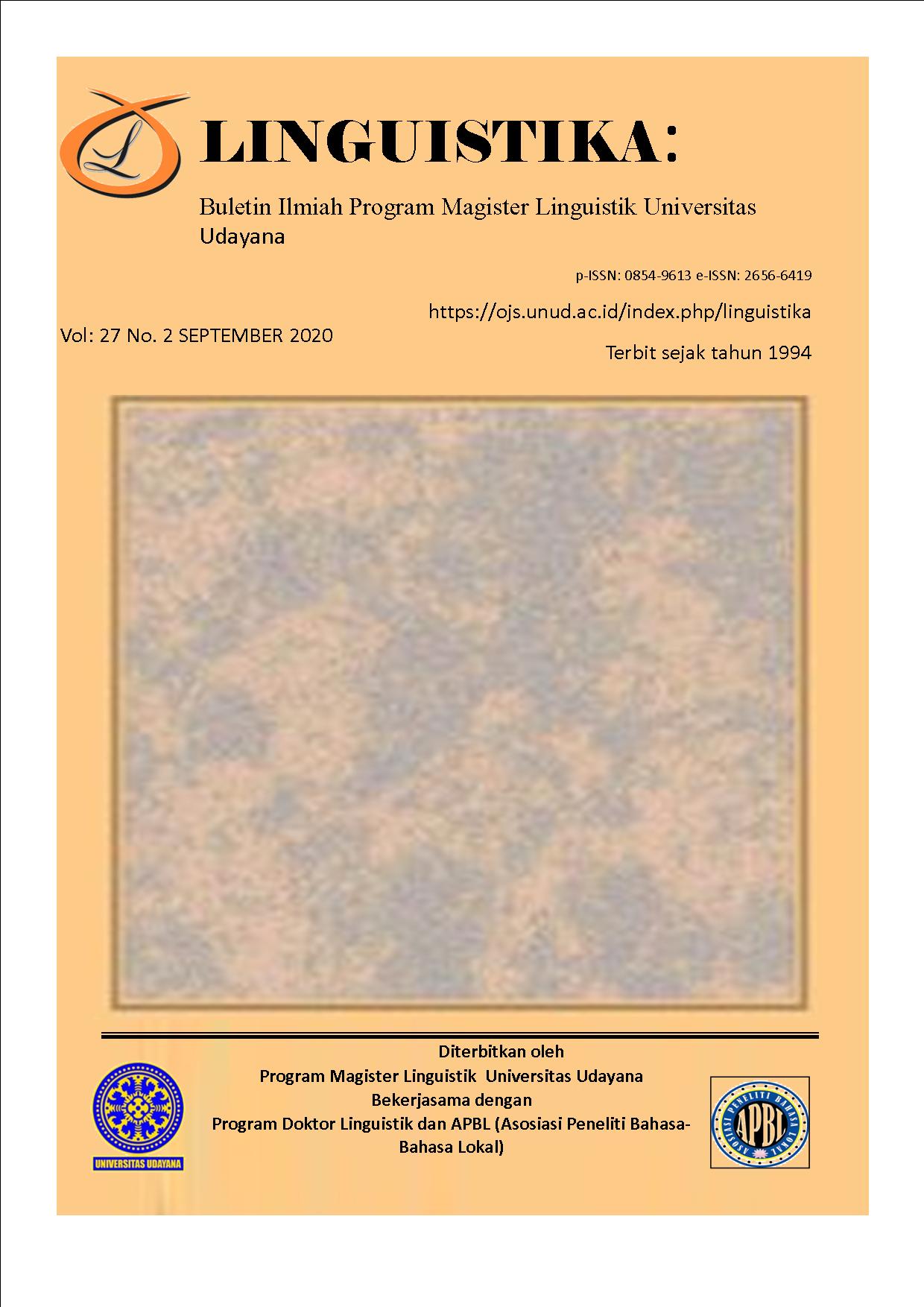Sufiks –m(u) sebagai Pembentuk Verba Deadjektiva Bahasa Jepang: Kajian Morfologi dan Metabahasa Semantik Alami (MSA)
Abstract
This research focuses in analyzing morphological processes and the semantic structure of deadjectival verb suffixation –m(u) in Japanese. Suffix -m(u) is one of the verb-forming suffixes in Japanese. The data was collected from newspaper article from website asahi.com and corpus data from website http://corpora.uni-leipzig.de. The data was collected by observation method and note-taking techniques. The data was analyzed using distribution method. The theory for analyzing the morphological processes is based on semantic class adjective developed by Morita (2010) and affixation theory developed by Sugioka and Ito (2002). Then, the theory for analyzing semantic structure deadjectival verb is Natural Semantic Metalanguage (NSM) theory developed by Goddard and Wierzbicka (2014). The results shows that not all adjectives in Japanese can be affected by the suffix –m(u). Deadjectival verb suffixation –m(u) in Japanese are formed by semantics prime FEEL. The semantic prime of FEEL can be polysemy with semantic prime THINK and HAPPEN.













